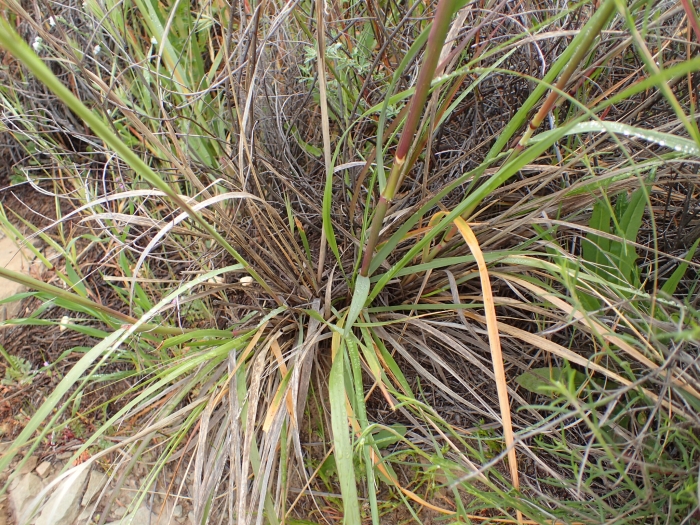Crested Needlegrass
(Eriocoma coronata)
Crested Needlegrass (Eriocoma coronata)
/
/

© George Williams
CC BY 4.0
Image By:
© George Williams
Recorded By:
Copyright:
CC BY 4.0
Copyright Notice:
Photo by: © George Williams | License Type: CC BY 4.0 | License URL: http://creativecommons.org/licenses/by/4.0/ | Uploader: georgewilliams1 | Publisher: iNaturalist |



















Estimated Native Range
Summary
Eriocoma coronata, commonly known as crested needlegrass or giant ricegrass, is a perennial grass native to a variety of habitats including coastal sage scrub, chaparral, oak woodlands, and yellow pine forests in southern California and Baja California. It is adapted to a range of elevations from sea level to 5,000 feet. This species typically forms loose bunches and can reach heights of up to 6.6 feet tall. The grass is characterized by its large spikelets and long awns, which are distinctive features of its appearance. Crested needlegrass is particularly prevalent in the Peninsular Ranges, Transverse Ranges, southern Outer California Coast Ranges, and the Channel Islands.
Eriocoma coronata is valued for its adaptability to different soil types and its drought tolerance, making it a suitable choice for native plant gardens, restoration projects, and erosion control. It provides habitat and food for wildlife, particularly birds that use the long awns for nesting material. In cultivation, it requires minimal water once established and prefers well-drained soils. It thrives in full sun to partial shade conditions. While generally low-maintenance, it can be susceptible to rust diseases.CC BY-SA 4.0
Eriocoma coronata is valued for its adaptability to different soil types and its drought tolerance, making it a suitable choice for native plant gardens, restoration projects, and erosion control. It provides habitat and food for wildlife, particularly birds that use the long awns for nesting material. In cultivation, it requires minimal water once established and prefers well-drained soils. It thrives in full sun to partial shade conditions. While generally low-maintenance, it can be susceptible to rust diseases.CC BY-SA 4.0
Plant Description
- Plant Type: Grass
- Height: 0.5-1.5 feet
- Width: 1-2 feet
- Growth Rate: Moderate
- Flower Color: N/A
- Flowering Season: Summer
- Leaf Retention: Deciduous
Growth Requirements
- Sun: Full Sun
- Water: Low
- Drainage: Fast
Common Uses
Drought Tolerant, Low Maintenance
Natural Habitat
Coastal sage scrub, chaparral, oak woodlands, and yellow pine forests within southern California and Baja California
Other Names
Common Names: Crowned Roemer’s Rush
Scientific Names: , Eriocoma coronata, Achnatherum coronatum, Stipa coronata, Stipa coronata var. coronata,
GBIF Accepted Name: